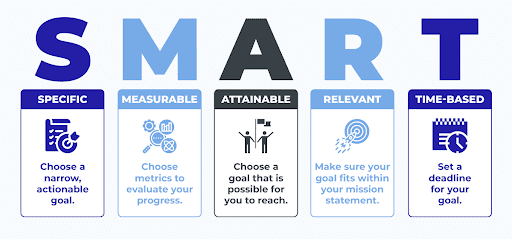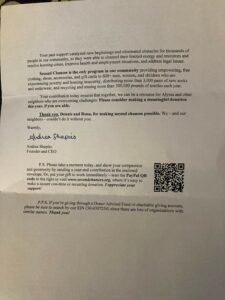A guest post by Roger Devine at SchoolAuction
Event-based fundraisers have evolved quite a bit in the past few years. Giving tendencies have shifted to online with 63% of donors preferring to give online with a credit or debit card. At the same time, in-person fundraisers still remain a crowd favorite for many donor audiences.Tools and techniques for virtual fundraising multiplied, to the point where now every fundraiser needs to ask the question:
“Should we go for a flexible, easy-to-pull off online event, an engaging and fun in-person gala, or some combination of the two?”
It’s not necessarily an easy choice. In this guide, we’ll review how understanding the following factors can ensure you’ve made the right decision for your event attendees:
- Audience
- Budget and Resources
- Event Goals and Content
- Timeline and Flexibility
Audience
Donors participate in fundraising events for a variety of reasons, and understanding your audience is essential to knowing which event format will help the most with your fundraising goals.
Start by identifying your target audience. If your group has been fundraising for a while, you’ll have some data on your existing donors–start there, and make sure you have a good handle on the following audience aspects:
- Demographics: The easiest starting place for this exercise. Smaller groups will have an intuitive understanding of their donor base, but larger organizations should consult their donor database to understand the core demographics. If you have missing information, consider obtaining a data append to fill in the gaps.
- Interests: Many fundraising galas offer opportunities for guests to receive something in exchange for their gifts; whether that happens through a live or silent auction, raffles, or games. These can be incredibly motivating for some supporters, while others might prefer public recognition of their gifts, in front of their friends and family.
- Schedules: School-based groups know not to hold their fundraisers in the summer, or during school vacations. Nonprofit organizations that are not school-related might not have to worry as much about Spring Break, but might want to engage donors during popular seasons like Giving Tuesday.
- Previous engagement preferences: Your donors’ past actions are a strong signal as to how they prefer to support your organization. For example, if your donors are scattered throughout different geographic locations, you may find that virtual fundraisers are your best bet.
Budget and Resources
A fundraising event needs to deliver a sufficient ROI to make the upfront costs and planning time worth it. Often, the decision on format comes down to what resources the organization can devote to its planning and execution.
In-person events, online silent auctions, and virtual events each have costs associated with them that the others do not. Galas need a venue, event staffing, an emcee/auctioneer, catering, and decorations. Online silent auctions require an online auction platform. Virtual events need live streaming capabilities and software features to facilitate and maintain engagement. Depending on the existing resources your organization and team have, some of these may be easier for you to acquire than others.
And although you have to keep your available budget in mind, there are a few creative strategies you can use to maximize your resources. These include:
- Pursuing sponsorships
- Partnering with like-minded organizations
- Requesting in-kind donations
As an example, your in-person auction committee can save money with sponsored support such as a venue, food, or entertainment.
Event Goals and Content
Organizations host fundraising events with a variety of goals in mind. Raising money is the primary goal; but public awareness, broadening the donor base, and increasing engagement are additional motivations behind the decision to hold many fundraising events.
Due to their atmosphere, certain events such as galas, dinners, and live auctions are more traditionally effective in-person than online. Many donors prefer to have an in-person experience of networking and supporting the cause they care about with a group of like-minded supporters.
Online auctions and virtual galas, on the other hand, can reach a much larger audience; not just because guests don’t have to get to the venue, but because there are some donors who would prefer to support from the comfort of their own homes.
General engagement may be easier to make happen in person, but online and virtual events can still incorporate ideas such as games,challenges, countdowns, and incentives to help close the gap.
Timeline and Flexibility
Similar to the budgetary constraints discussed above, the amount of time you have to plan your event may have a significant impact on the type of event you can run.
In-person events and virtual galas often depend on the availability of resources such as venues, entertainment, auctioneers, and emcees who often need to be booked months in advance. Online silent auctions can generally be planned and executed within a couple of weeks.
It’s also important to remember that many organizations don’t choose between in-person and online fundraising events—they incorporate both into the same event. For instance, an online “clean-up” auction a few weeks after your gala can help maximize revenue with little additional effort.
SchoolAuction.net points out other online fundraising add-ons you can explore, including:
- Online raffles: People love games, so raffles can provide a fun and engaging way for more supporters to participate.
- Text-to-give: Adding this feature greatly enhances convenience as well as accessibility, since your donors can contribute instantly using their cell phone.
- Merchandise stores: Offer branded merchandise, gifts, and other items. Once the store is set up, it can continue to generate sales and funds long after the initial fundraising event has taken place.
- Crowdfunding pages:These are often successful since they foster a sense of community involvement and people enjoy their interactive elements, from chat features to tracking the campaign’s progress in real time.
Give yourself plenty of time to flesh out the details of your fundraising plan before you jump in head first. This way you won’t miss an additional revenue-building opportunity.
 Roger Devine is a co-founder of Northworld, the developer and distributor of the award-winning SchoolAuction.net auction-management software. Before starting the company, Roger worked for many years in software, website development, and publishing. He’s chaired at least 30 auctions over the past 20 years (one loses count after a while), has served terms on the boards of several area non-profits, loves all dogs on the planet, and lives in Portland, OR.
Roger Devine is a co-founder of Northworld, the developer and distributor of the award-winning SchoolAuction.net auction-management software. Before starting the company, Roger worked for many years in software, website development, and publishing. He’s chaired at least 30 auctions over the past 20 years (one loses count after a while), has served terms on the boards of several area non-profits, loves all dogs on the planet, and lives in Portland, OR.



